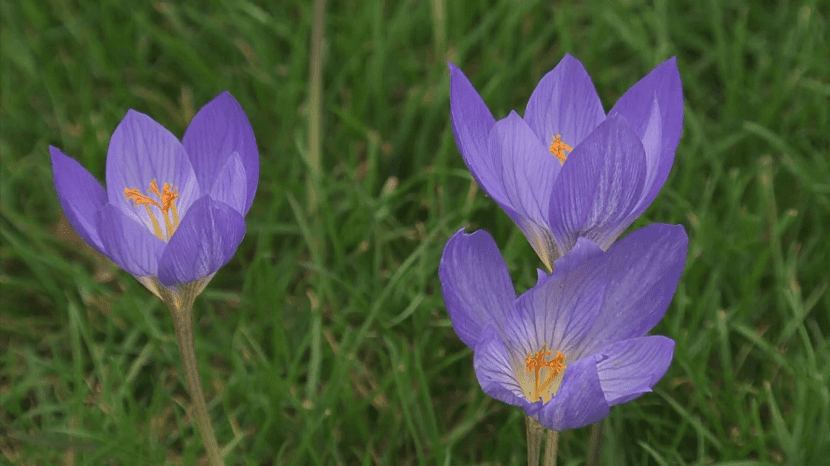
The Autumn Daffodil o Colchicum or Kolhikum is a plant that is part of the genus formed by flowering perennials and belongs to the family of timeless. It is also native to North Africa, Western and Central Asia, Europe and the Mediterranean.
Currently this plant is cultivated in most areas that have a temperate climate and as a general rule, Colchicum usually blooms when fall ends, that is, approximately at the end of September and / or the beginning of October.
Features

This plant, also called saffron, can easily be found in multiple short stems that have large oblong-lanceolate leaves, which sprout at the beginning of the summer.
Colchicum usually blooms during the fall, however some varieties of the species usually bloom when spring arrives. As flowering occurs, individual funnel-shaped flowers sprout, which are lifted away from the ground and reaching a length of approximately 20cm.
Also It is worth mentioning that Colchicum is a toxic plant, which was previously indicated in a writing by a Greek pharmacologist and naturalist named Dioscorides.
It is a perennial plant that has a scaly, subterranean bulb from which long slimy flowers sprout with purplish calyxes.
Its leaves are characterized by being thin, long and lanceolate, in addition to appearing agglutinated in tufts; Its fruit sprouts in the center of each set of leaves, and consists of an oval capsule that has multiple seeds inside. Besides, it is necessary to say again that it is a poisonous plant, which blooms between summer and autumn and its fruits reach maturity after a year, when spring arrives.
It is also a lively plant that reaches around 25cms in height and has a round or pear shape.
Its green leaves are born after flowering and during the warm periods or after the warm months, a bulb appears from which a shoot sprouts that gives rise to two or three flowers of a pleasant lilac or pink tone that in their part upper has a bell shape, it is also a flower bud that has no leaves.
Species
The genus Colchicum is made up of just over 60 different species of bulbous plants (with corms) which come from the mountainous regions of Europe, Asia and the Mediterranean basin.
Among the main species of this plant are, for example, Colchicum byzantinum, Colchicum autumnale, Colchicum speciosum, Colchicum agrippinum. Colchicum luteum, Colchicum cilicicum, Colchicum bivonae, popularly known as Wild saffron, Cólquico, Snack remover and / or Autumn Crocus.
Similarly, it is worth mentioning that stands out as a decorative plant, whether it is located indoors in a pot or as a garden plant with which to offer touches of color to the lawn.
Care

Colchicum requires good sun exposure, although it is also ideal for semi-shady areas, which is why it turns out to be a perfect plant for both mild and temperate climates.
It also requires a loose and light soil that gives it a good supply of nutrients. Its planting as an autumn flower has to be carried out during the summer, while as a spring flower it must be done at the end of autumn.
At the time of flowering, the land where it is found must be watered in such a way that it always remains moist and once the leaves sprout, watering will have to be significantly reduced until it is completely eliminated when the leaves turn yellow; at this point you have to prune the dead leaves and make sure to keep the bulb dry.
It does not require any type of fertilizer and although it is a plant with great resistance, it is possible that sometimes it is attacked by bed bugs. And although it is possible to multiply it by seeds, the easiest thing is usually to separate the bulbous shoots during the winter.
Medical uses
Colchicum has various medicinal uses (have anti-inflammatory, diuretic, vasodilator and analgesic propertiess), for which it is necessary to especially collect the seeds and bulbs, allowing them to dry in the sun.